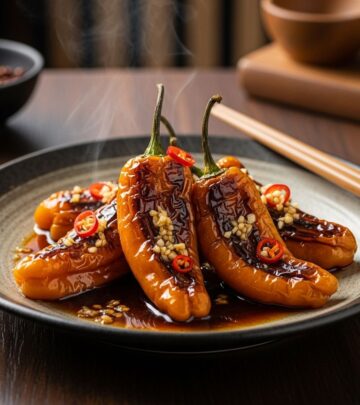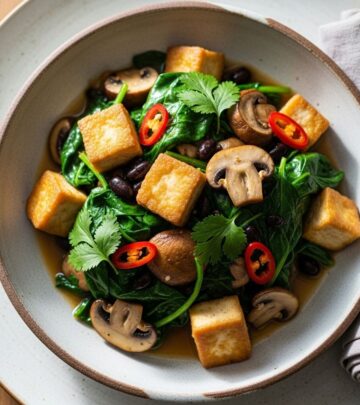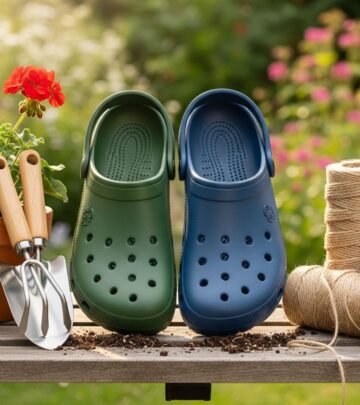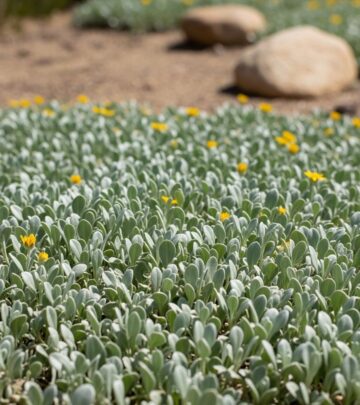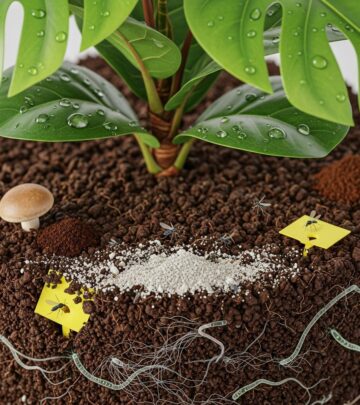Types Of Sage: 19 Best Culinary & Ornamental Varieties
Discover the amazing diversity of sage with 19 culinary and ornamental varieties, plus expert tips for growing this versatile garden favorite.
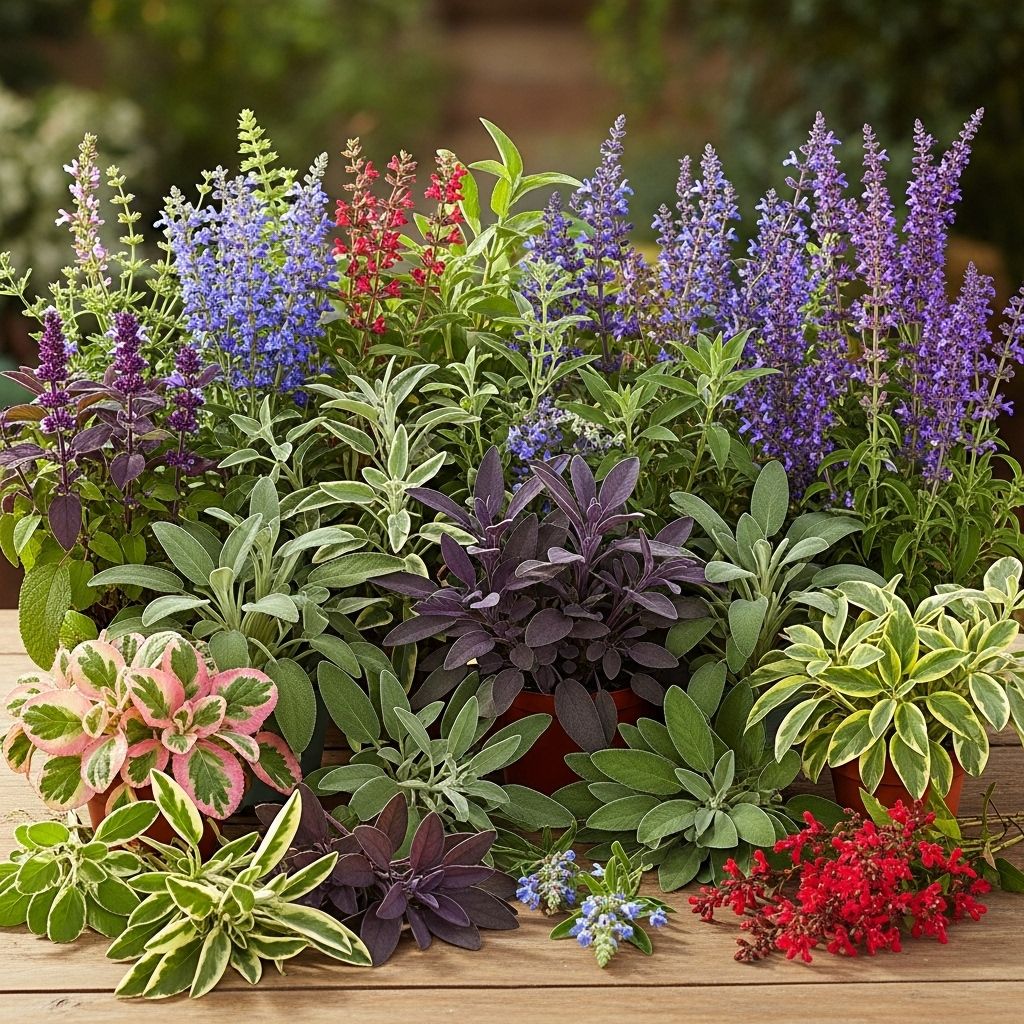
Image: HearthJunction Design Team
19 Types of Sage: Culinary and Ornamental Varieties for Every Garden
Sage is a beloved plant in gardens worldwide, prized both for its rich culinary heritage and its stunning ornamental forms. With hundreds of species in the Salvia genus alone—ranging from Mediterranean classics to colorful native wildflowers—the world of sage offers endless possibilities for gardeners. Whether your interest lies in flavor, fragrance, flowers, or attracting pollinators, there’s a type of sage perfectly suited to your space.
What Is Sage?
Sage refers primarily to members of the Salvia genus—a group of aromatic herbs and subshrubs in the mint family (Lamiaceae). While many recognize sage as a familiar ingredient in stuffing or teas, this group extends into numerous forms: ground covers, tender perennials, wildflowers, and vibrant ornamental shrubs. Sage is valued for more than taste; its traditional medicinal uses, drought tolerance, and pollinator-attracting blooms make it a fundamental staple in herb and ornamental gardens alike.
Culinary Sage Types
When most people think of sage, the culinary species come to mind. These varieties don’t just bring flavor to the table—they add texture and beauty to the garden as compact shrubs or container plants.
Salvia officinalis (Common Sage)
- The classic kitchen sage: gray-green leaves with a soft, pebbled texture.
- Perennial in USDA zones 4–8, growing 18–36 inches tall and wide.
- Shrubby and semi-woody with edible, purple-blue flowers loved by pollinators.
- Used extensively in savory dishes, stuffing, meats, and teas.
Salvia officinalis ‘Purpurascens’ (Purple Sage)
- Features dramatic purple-tinged leaves that deepen in cold weather.
- Equally edible, with a milder, earthy flavor than green sage.
- Striking visual addition to culinary and ornamental beds.
Salvia officinalis ‘Icterina’ (Golden Sage)
- Boasts variegated leaves in creamy yellow and green.
- Edible and ornamental, prized for both foliage color and gentle flavor.
- Low-growing, ideal for border fronts and container gardens.
Salvia officinalis ‘Tricolor’
- Stunning variegated leaves splashed with green, white, and pink-purple.
- Grows slightly smaller than standard sage; great for decorative pots.
- Retains classic sage flavor with a slightly milder taste.
Salvia lavandulifolia (Spanish Sage)
- Native to Spain; compact and highly aromatic with slender gray leaves.
- Excellent culinary herb, especially in Mediterranean cuisine.
- Tolerant of hot, dry conditions and drought.
Salvia fruticosa (Greek Sage)
- Important in Mediterranean regions for teas and seasoning meats.
- Features dense clusters of silvery leaves and purple flowers.
- Hardy and heat-tolerant, thriving in rocky soils.
Salvia elegans (Pineapple Sage)
- Known for its sweet, pineapple-scented leaves.
- Produces vivid red tubular flowers that attract hummingbirds in late summer and fall.
- Leaves and flowers are edible—fantastic in teas, desserts, and salads.
Salvia miltiorrhiza (Red Sage, Dan Shen)
- Widely used in traditional Chinese medicine.
- Deeply lobed leaves and purple-red flower spikes.
- Noted for its medicinal roots and subtle herbaceous taste.
Salvia apiana (White Sage)
- Iconic in spiritual rituals and smudging practices.
- Thick, pale silvery leaves with a strong, resinous scent.
- Edible in small amounts; more commonly grown for its fragrant foliage.
Salvia chamaedryoides (Germander Sage, Blue Oak Sage)
- Low-growing ground cover with intense blue flowers.
- Reaches 12–18 inches tall, spreads up to 4 feet wide.
- Outstanding pollinator plant for xeriscape and drought-tolerant gardens.
Ornamental Sage Types
Many sages excel primarily as ornamental plants, chosen for their spectacular flowers, interesting foliage, and ability to attract pollinators or beneficial insects. Here are some standout varieties:
Salvia leucantha (Mexican Bush Sage)
- Produces long arching stems adorned with velvety purple and white flower spikes.
- Grows up to 3–4 feet tall; a fall-blooming highlight in mixed borders.
- Attractive to bees, butterflies, and hummingbirds.
Salvia farinacea (Mealycup Sage)
- Forms dense clumps with tall blue or purple flower spikes.
- Highly resilient as an annual in cold climates and perennial in warm regions.
- Ideal for flowerbeds and pollinator strips.
Salvia splendens (Scarlet Sage)
- Famed for fire-engine-red flower spikes that light up bedding schemes.
- Usually grown as an annual; thrives in full sun and well-drained soil.
- Excellent companion for other summer annuals.
Salvia guaranitica (Anise-Scented Sage, Black and Blue Sage)
- Striking blue-black flowers and aromatic foliage with a licorice scent.
- Prefers moist, rich soil and grows 3–5 feet tall.
- Favorite of hummingbirds and butterflies.
Salvia microphylla (Baby Sage, Littleleaf Sage)
- Small shrub with an array of pink, red, or magenta flowers.
- Long-blooming and drought-tolerant.
- Often hybrids exist with Salvia greggii; perfect for low-water gardens.
Salvia coccinea (Scarlet Sage, Texas Sage)
- Brilliant scarlet flowers on slender stems, often grown as a reseeding annual.
- Supports hummingbirds and native bees.
Salvia greggii (Autumn Sage)
- Compact, bushy, and adaptable.
- Bears a profusion of flowers in red, pink, coral, or white from spring through frost.
- Excellent for borders and rock gardens.
Salvia nemorosa (Wood Sage, Balkan Clary Sage)
- Dense spikes of purple, blue, or pink flowers in late spring and summer.
- Hardy perennial in cooler climates.
- Low-maintenance and pollinator-friendly.
Salvia patens (Gentian Sage)
- Renowned for large, true-blue flowers—among the bluest in the plant kingdom.
- Grown as a tender perennial or annual in cooler regions.
Choosing the Right Sage for Your Garden
With the diversity of sage available, the ideal type for your garden depends on the intended use, climate, and space:
- Culinary Use: Choose Salvia officinalis varieties for kitchen gardens, and experiment with pineapple or Greek sage for unique flavor profiles.
- Ornamental Appeal: Select Mexican bush sage, mealycup sage, or scarlet sage for vivid, pollinator-friendly blooms.
- Drought Resistance: Most Salvia species are well-adapted to dry conditions, making them perfect for xeriscapes.
- Pollinator Support: Virtually all sages attract bees, butterflies, and hummingbirds, but those with tubular flowers and bright colors are especially popular with wildlife.
Quick Reference Table: Sage Varieties
| Species/Variety | Primary Use | Flower Color | Growth Habit | USDA Zones |
|---|---|---|---|---|
| Salvia officinalis (Common Sage) | Culinary | Purple-blue | Shrubby | 4–8 |
| S. elegans (Pineapple Sage) | Culinary/Ornamental | Red | Upright | 8–11 |
| S. leucantha (Mexican Bush Sage) | Ornamental | Purple, white | Arching | 8–11 |
| S. greggii (Autumn Sage) | Ornamental | Red, pink, coral | Compact bush | 7–9 |
| S. apiana (White Sage) | Ritual/Medicinal | White | Shrubby | 8–11 |
| S. chamaedryoides (Blue Oak Sage) | Ornamental | Blue | Low, spreading | 8–11 |
Growing and Caring for Sage
Sage thrives in full sun and well-drained, slightly sandy soils. Here are some essential tips for healthy sage plants:
- Plant in areas with at least six hours of sunlight daily.
- Space plants 12–18 inches apart to ensure good air circulation.
- Avoid overwatering—sage prefers soil to dry slightly between waterings.
- Harvest leaves regularly to promote bushier growth and flavor intensity.
- Prune woody stems after flowering to encourage new shoots.
Benefits of Growing Sage
- Edible: Sage leaves and even flowers are edible, lending bold herbal flavor to meats, vegetables, and teas.
- Medicinal: Used traditionally to support digestion and soothe sore throats.
- Wildlife Support: An essential source of nectar for bees, butterflies, and hummingbirds.
- Drought Resilience: Most sages are well-suited to dry, sunny climates and require minimal water once established.
- Deer-Resistant: Foliage has aromatic oils that deter browsing.
Frequently Asked Questions (FAQs)
Which sage varieties are best for cooking?
Common sage (Salvia officinalis) and its cultivars (purple, golden, tricolor), as well as Greek sage and Spanish sage, are most widely used in cooking for their robust, savory flavors.
Can I grow ornamental sage indoors?
Some compact ornamental sages, such as autumn sage or tricolor sage, can be grown indoors in bright, sunny windows. Ensure well-drained soil and careful watering; sage doesn’t like “wet feet.”
How do I harvest sage leaves?
Snip individual leaves or trim stems as needed—harvest in the morning after dew dries for peak flavor. Regular harvesting keeps plants compact and vigorous.
Is sage safe for pollinator gardens?
Absolutely! Sage is among the top choices for attracting bees, butterflies, and even hummingbirds thanks to its vibrant, nectar-rich flowers.
What problems might I encounter growing sage?
Sage is generally low maintenance but can suffer from root rot if overwatered or in poorly draining soil. Powdery mildew may occur if airflow is restricted; space plants appropriately and prune regularly.
Conclusion
Sage is one of gardening’s most versatile and rewarding groups—offering a spectrum of flavors, forms, and colors. Whether you’re seeking culinary delights, vibrant ornamental blooms, or habitats for pollinators, exploring the many types of sage ensures a garden that’s as beautiful as it is bountiful. Experiment with several varieties to discover which sages thrive in your conditions and suit your taste. Happy gardening!
References
Read full bio of Srija Burman

